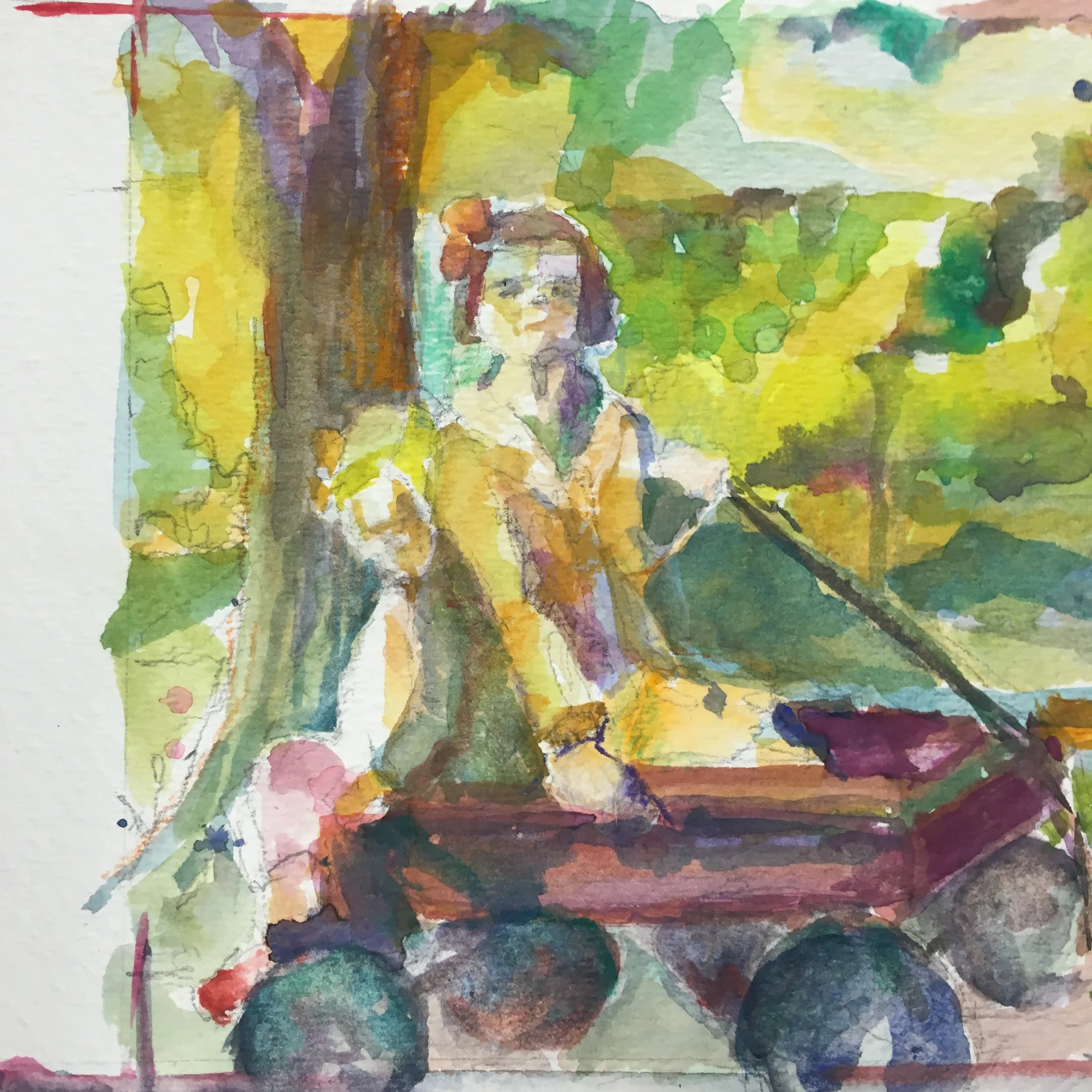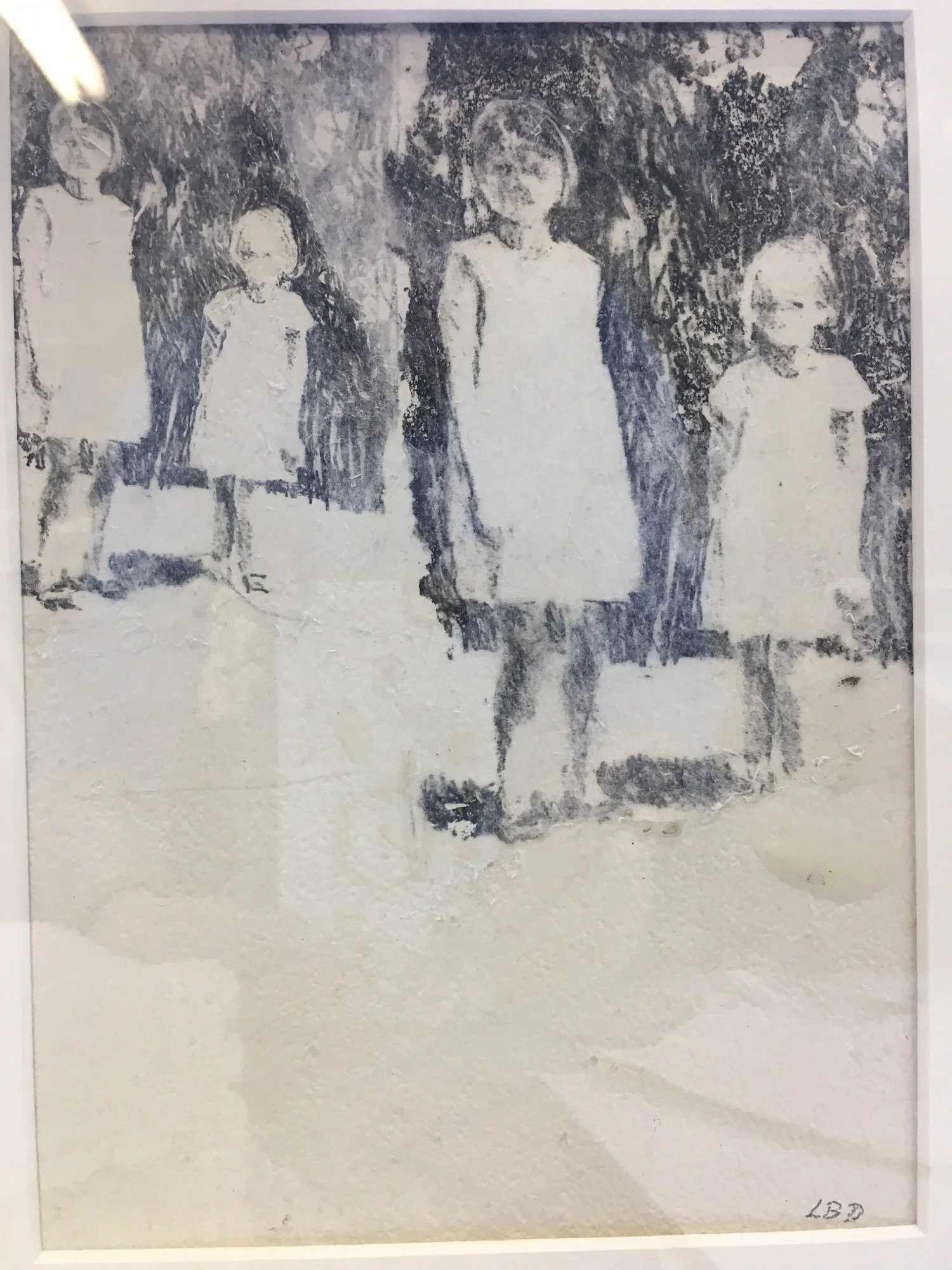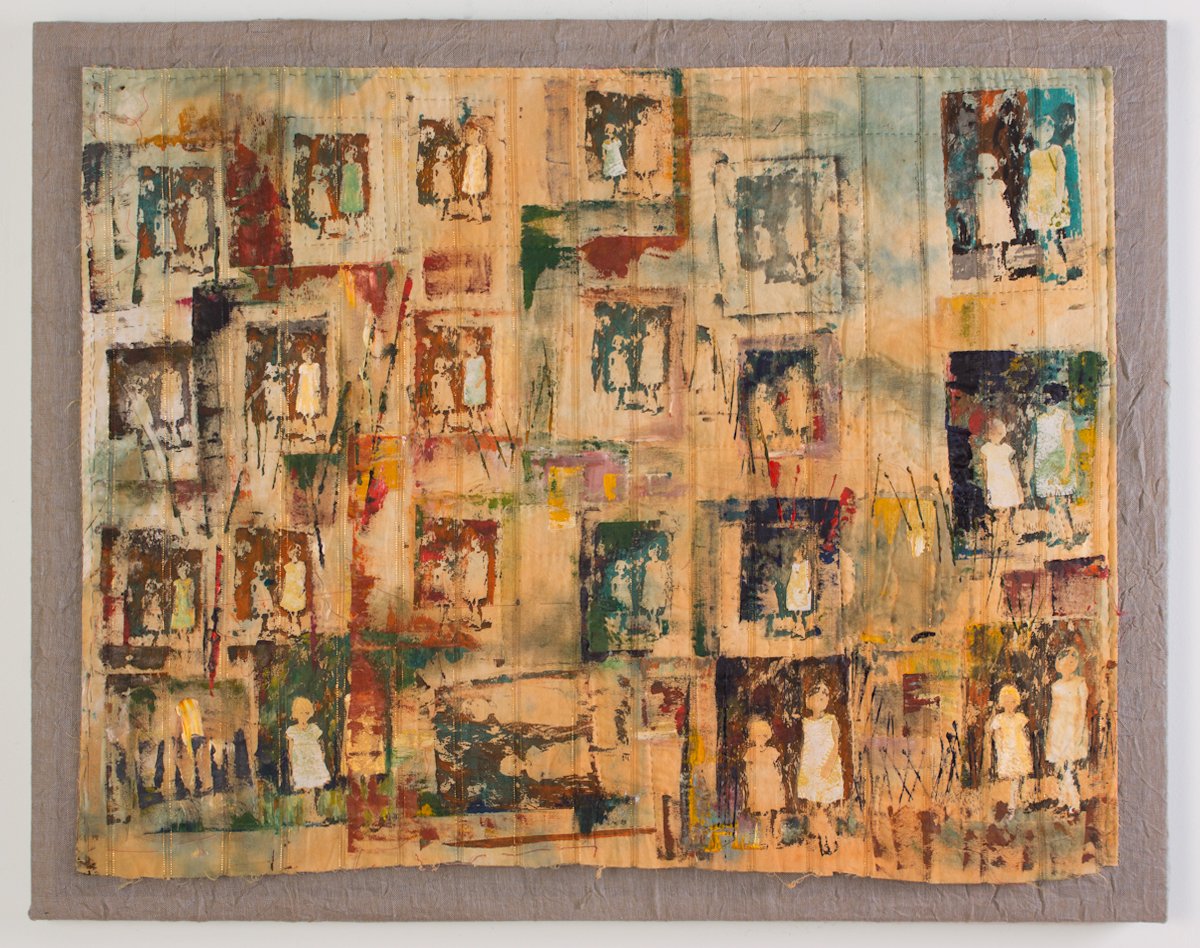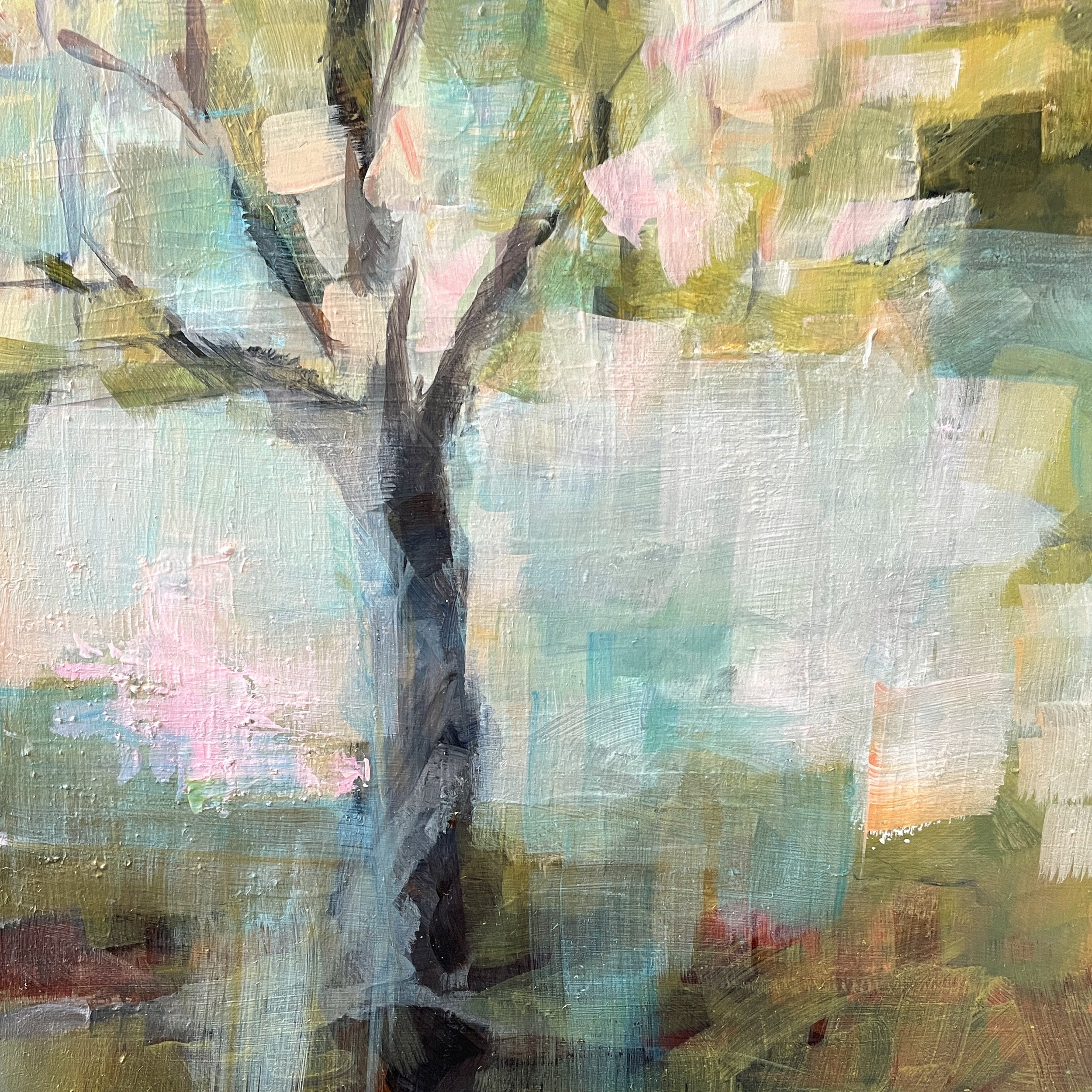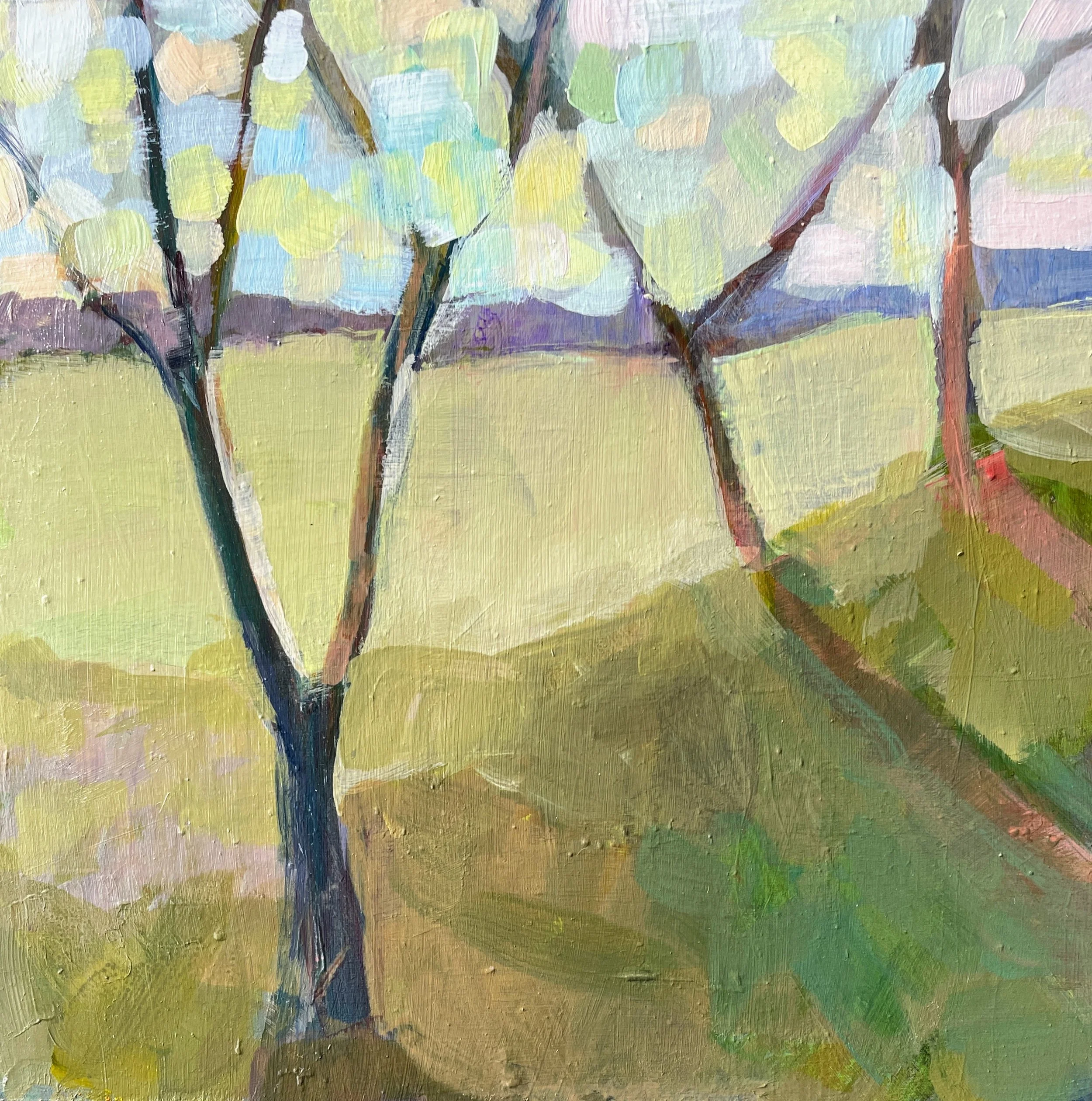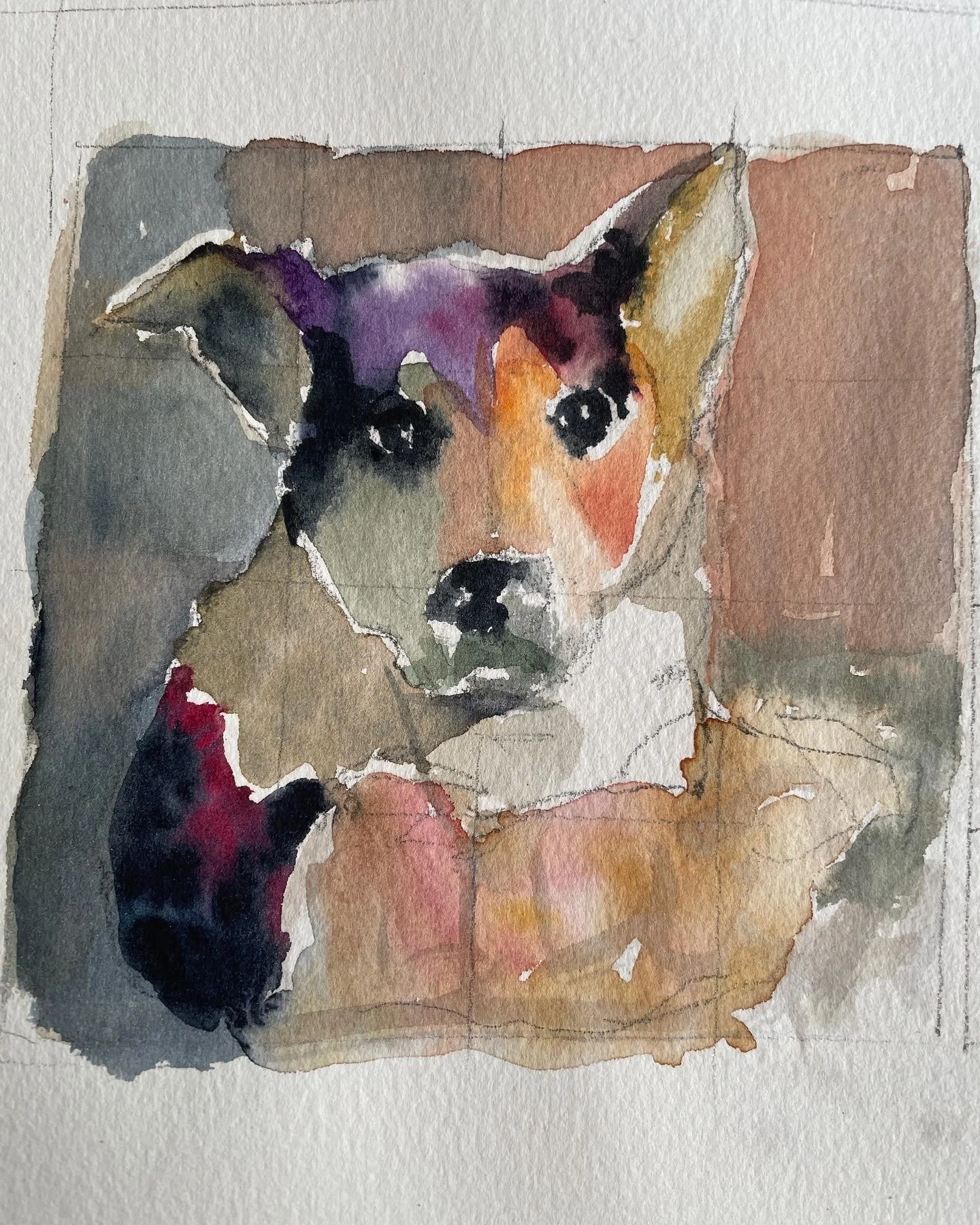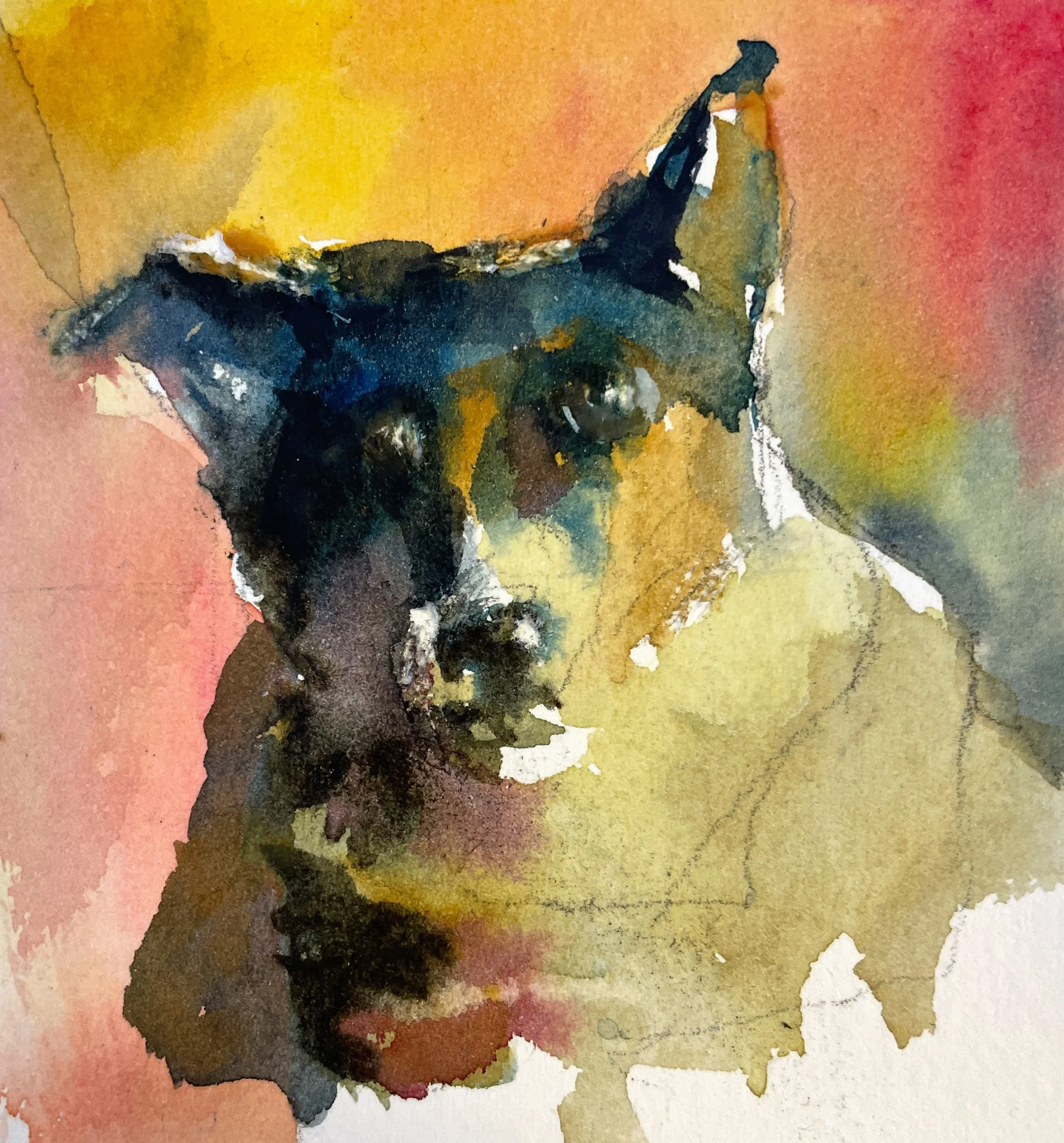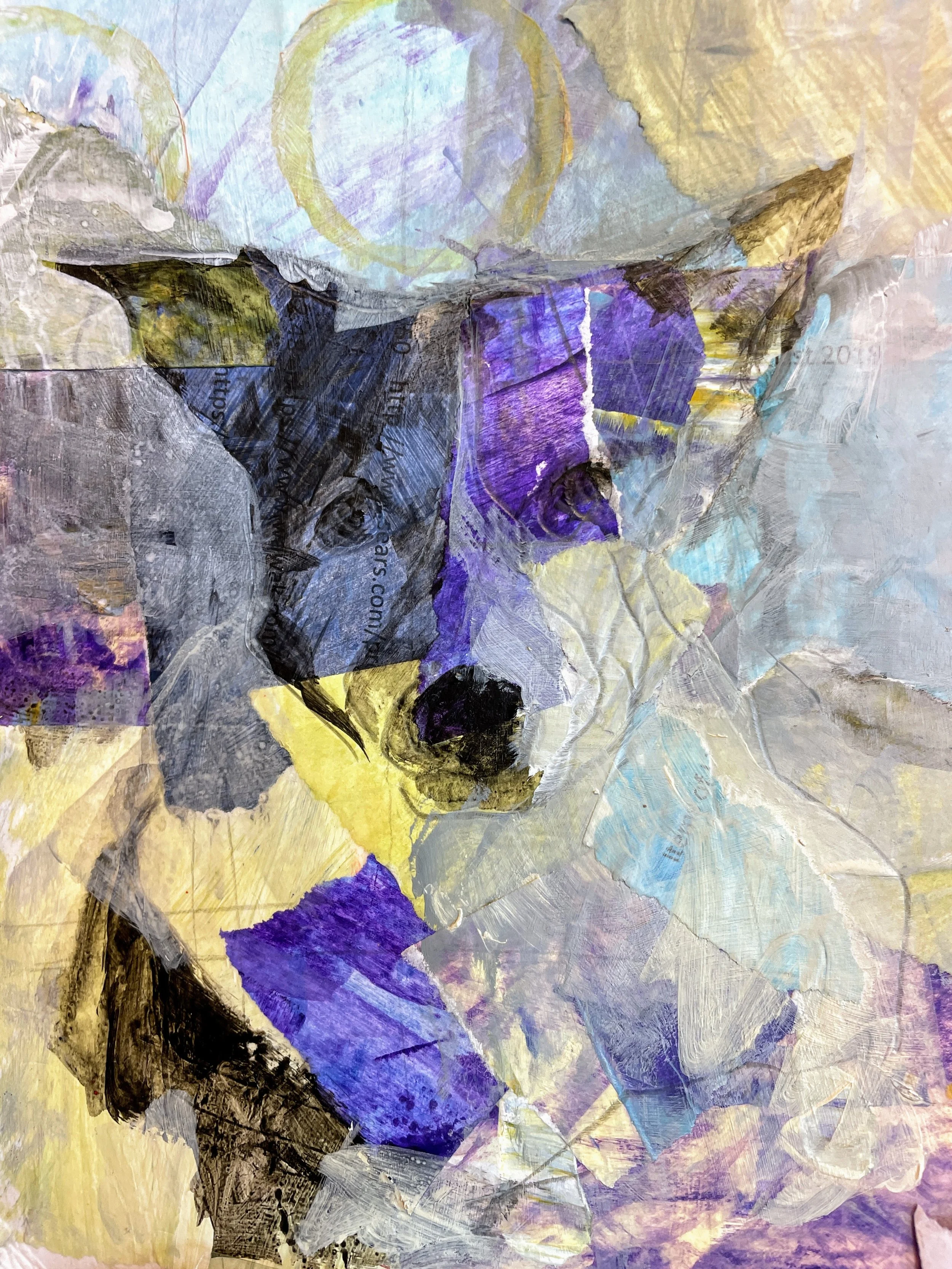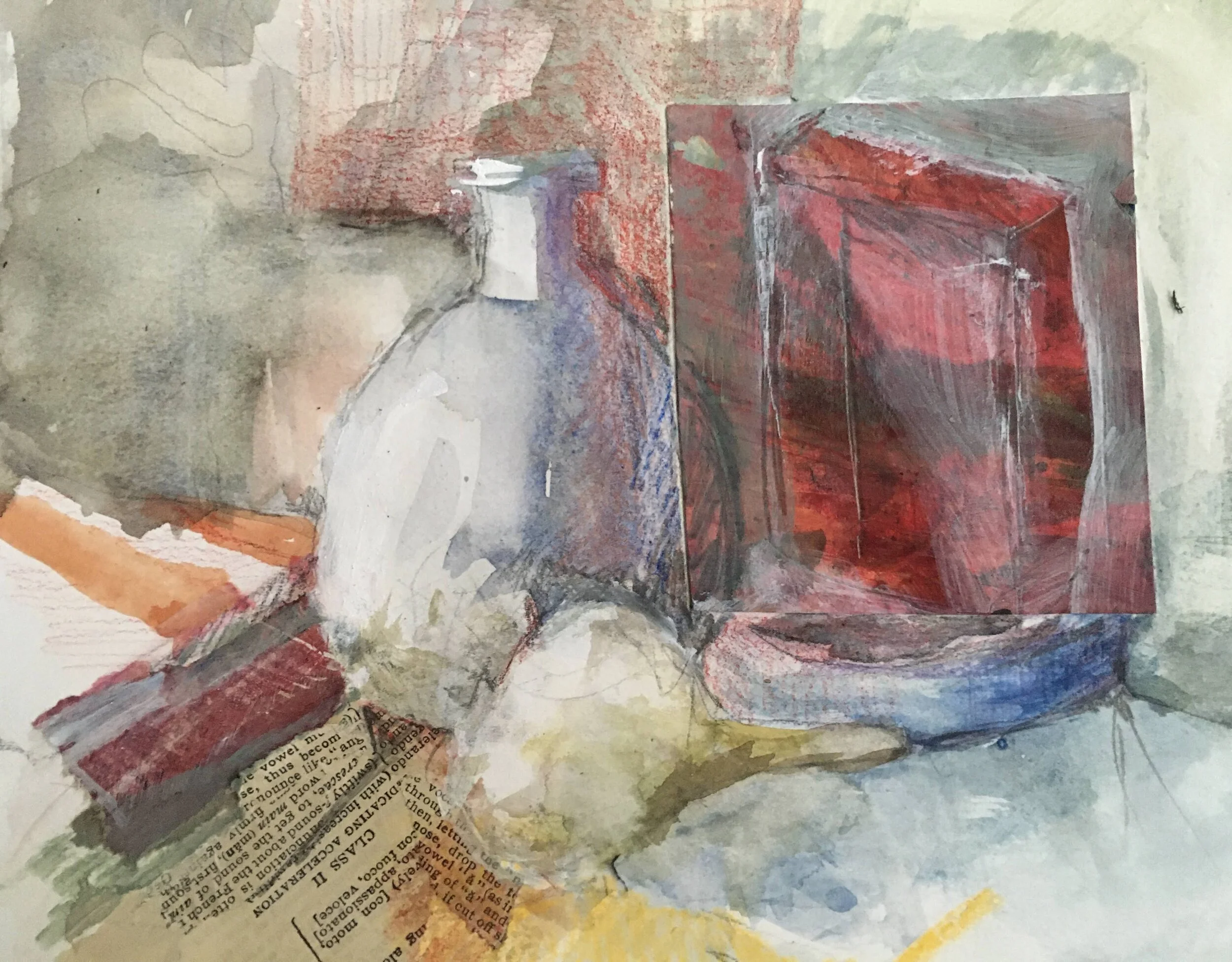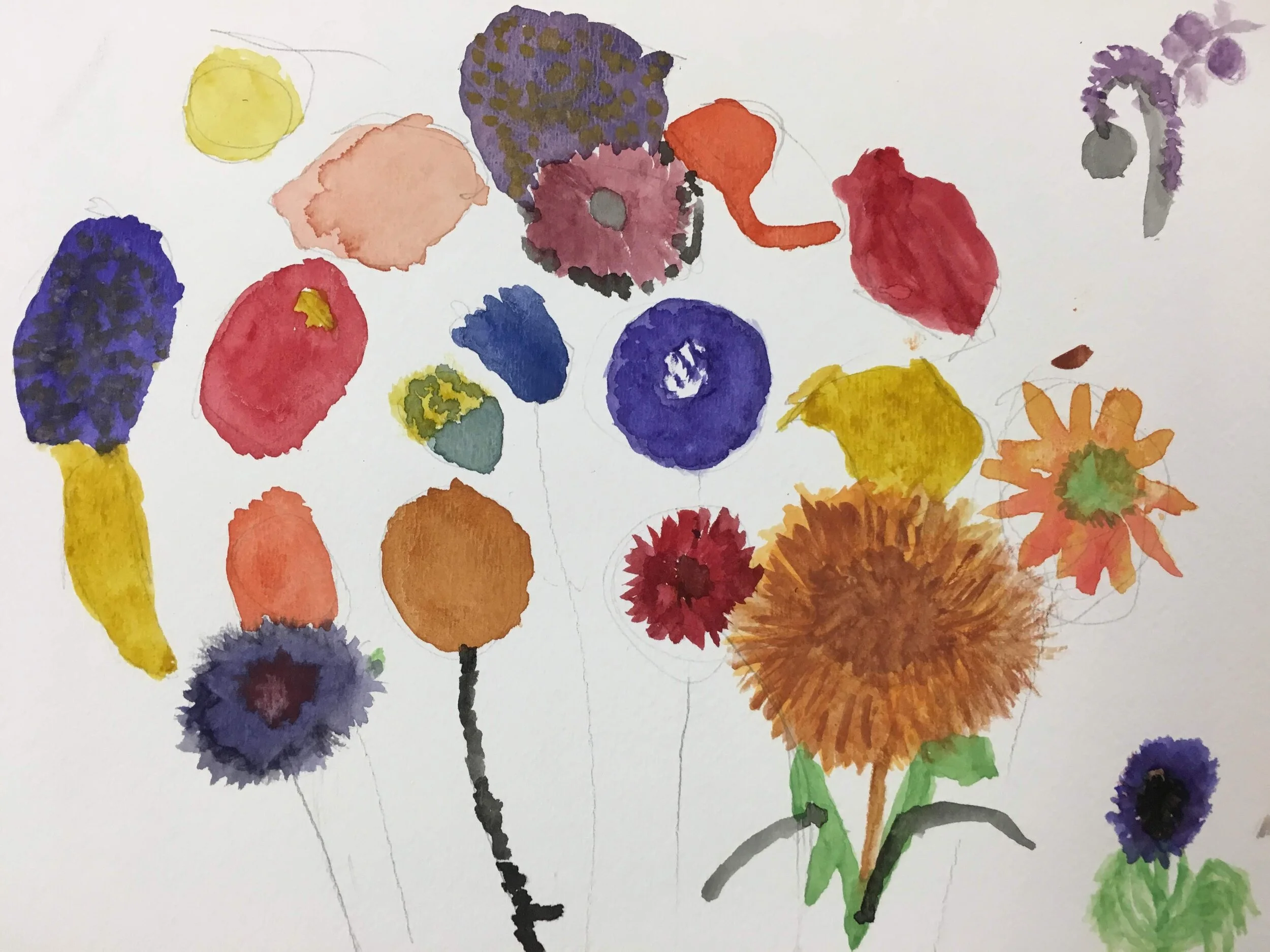Live the questions now.
-Rilke
Changing
When an image grabs you and won’t let go….
When photos of my mother’s childhood came to me over a decade ago, I started drawing and painting from them. The mystery of her past wove into my baby steps, learning about paint:
One picture in particular caught me: my mother as a girl, with her little sister beside her. Gloria died after childbirth when I was 3. In this image, all that’s before them. The photo felt parallel to my own childhood, now past, as well as to my daughter’s, a girl at the time.
I drew and painted it, over and over:
I did the same with an image of my sister and me, dressed in our Easter finest:
Last month, cleaning my studio, I found old attempts that no longer worked for me. Some I put out of their misery. Two, though, asked for one more chance. (If you don’t like something, you have nothing to lose by trying.) To my surprise, the “destructo move” of white was just what they needed. That layer of color lies like mist between us and the images. What I wanted say all along: memory and distance, overlapping like waves in our mind.
These are called The Weight of Air and Offering. Find them at the Gallery Twist April 21-May 21, 2023.
looking through light
It all comes down to light. The illusion of 3-d form fools us, but a painting is just a surface, with colors and shapes juxtaposed. Recently I tried letting go (a little) of the subject, to experiment instead with close values and soft edges.
I used to try to paint what I saw. Now more often I watch the paint itself. What’s happening with each mark? Do I want more of that, or something else. The painting is the question, not the subject. The problem is not “How to represent this?” but “What is happening on this page?”
“It’s a poem, not a police report.” Think about structure, line, emphasis, rhythm, mood. Guide the viewer, then release, then reengage.
What do you want to say? Who do you want to say it to? How will you use to say it?
Six inches square and so much to think about.
Eyes on the page
Follow the work where it leads.
One of the biggest lessons for me has been how a painting grows. You pursue it through change. Each attempt teaches something. Take take risks. Experiment. There is no right answer.
This painting evolved from several iterations.
I'm learning to watch the page. Follow the work, a teacher use to say. It will tell you what it wants to become.
Who’s a Good Girl? watercolor and graphite on archival paper 6”x 6” available in my shop
Gather in. Share out.
The teachers I’ve met on-line since March 2020 have pushed me to new insights, sparked so many ideas. Emily Hirtle guided me into an enthusiastic relationship with gouache. Four weeks with Ed Praybe was as eye-opening as a college semester’s class in drawing. My head’s exploding with possibilities, approaches. Other great sources: the Winslow Art Center in Washington state and Emily Ball in Britain.
drawing with Ed Praybe
The teachers I’ve met on-line since March 2020 have pushed me to new insights, sparked so many ideas. Emily Hirtle guided me into an enthusiastic relationship with gouache. Four weeks with Ed Praybe was as eye-opening as a college semester’s class in drawing. My head’s exploding with possibilities, approaches. Other great sources: the Winslow Art Center in Washington state and Emily Ball in Britain.
Class work provides focus, creates rhythm, enlarges possibilities. We *could* make work alone, but something about the synergy of teacher and student stretches art muscles. On-line art gym!
I never liked going to the gym, but I always loved going to art class.
Investigate. Repeat.
Surprise: It’s ok to stick with one idea.
“If you chase two rabbits, you’ll catch none.”
Rendering one image at least three times brings strength, understanding.
Here’s a daily painting (left) and what became of it when revisited (right).
Simpler shapes. More attention to the painting - movement, shape, color. Less to the flowers themselves.
Plus months of painting time in-between. My piano teacher was right. Practice, and you’ll get better.
Sign up for art tips and studio news:




